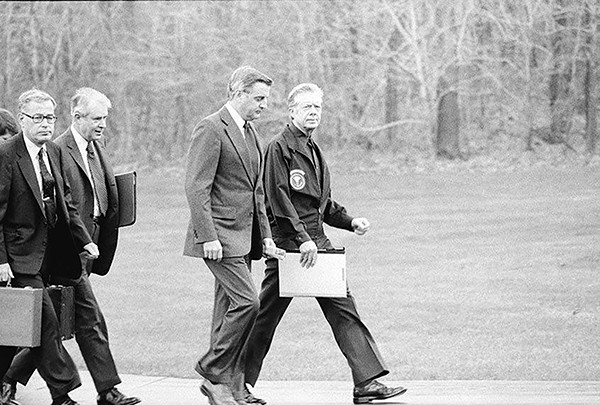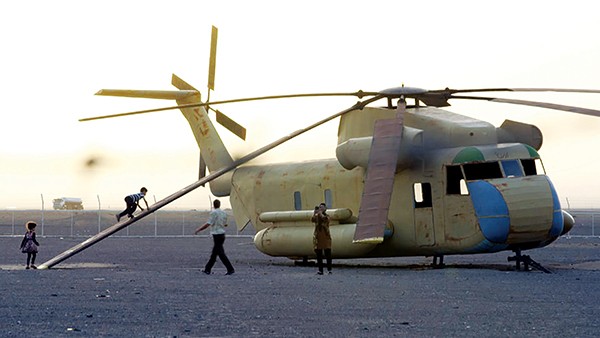Barbara Kopple is one of America’s greatest and most important documentary directors. She was the Maysles brothers’ assistant on Salesman and ran camera on their seminal Rolling Stones documentary Gimme Shelter. Her first film as sole director, Harlan County U.S.A., is a searing document of a Kentucky coal miners’ strike. Kopple kept her cameras rolling for a full year, as the strike spiraled into violence. The crew were beaten and shot at, and the self-described hippie took to carrying a gun. The film won the Academy Award for Best Documentary in 1976, and was voted No. 24 in Sight & Sound magazine’s 2014 poll of best documentaries — ahead of both Gimme Shelter and Salesman.
Kopple didn’t win an Oscar for 2015’s Miss Sharon Jones!, but it is a powerhouse of a film about the singer fighting for her art and life. I get chills just thinking about the scene when Jones, fresh from cancer surgery, returns to the church where she grew up to belt out a song from the bottom of her soul.

Director Barbara Kopple scored an interview with President Jimmy Carter for her new documentary, Desert One.
Kopple’s latest film, Desert One, lacks a moment as emotionally affecting as Jones channeling the raw life force, but it is still a masterclass in documentary filmmaking. Kopple’s most beloved films are cinema verité — fly-on-the-wall camera with minimal or no narration — but Desert One is a traditional archival doc with talking head interviews, proving the director can do anything she wants.
There are inflection points in history that loom larger as time goes on, and the 1979 Iran hostage crisis is one of them. In 1953, the United States and Great Britain, seeking to shore up a Cold War flank and ensure the steady flow of oil, orchestrated a coup in Iran that installed Shah Mohammad Reza Pahlavi as absolute ruler. The CIA became the Shah’s most active supporter, and in return the Shah kept the Soviet communists away from the crude.
But the situation came to a head in 1979, when a revolution, led by the firebrand imam, Ayatollah Khomeini, deposed the Shah, beginning the modern political era of Islam. The theocracy scored its first big win when a group of Iranian students broke into the American embassy in Tehran and took 52 of the Marine guards and U.S. State Department diplomats prisoner. One of Kopple’s first big reveals, delivered in an interview with a female Iranian hostage-taker, was that Khomeini didn’t order the storming of the embassy — or as she calls it, the “spy’s nest.” The student activists did it on their own and were willing to release the hostages and withdraw if the Ayatollah ordered it.

But Khomeini knew a winning hand when he saw one. President Jimmy Carter had no good options. As a former nuclear submarine officer, Carter was acutely aware of the cost of war. He was not about to risk a conflict that could kill hundreds of thousands over 52 hostages, at least not until diplomacy had been exhausted.
The hostage crisis dragged on through the election year of 1980, and Carter’s charismatic challenger, Ronald Reagan, made hay of it at every opportunity. Finally, on April 24, 1980, Carter launched Operation Eagle Claw, a daring special forces mission to rescue the hostages. In Kopple’s interviews with the survivors of the operation, it becomes clear that the plan was more of a harebrained scheme.
Using then-new night vision goggles, eight helicopters and six heavy transport planes would fly more than 1,000 miles into Iran and establish a secret base in the desert. There, they would refuel the helicopters and fly Delta Force commandos to a second, secret mountain location. From there, they would be smuggled into Tehran, a city of 9 million people, in CIA-acquired trucks and simultaneously attack two different locations to liberate the hostages. Then, they would capture a soccer stadium, turn it into a heliport, and fly to an abandoned Air Force base, which yet another team of soldiers had presumably secured, and then fly to freedom in another set of transport planes. One soldier who was on the flight says he never thought they had a chance.
The plan never got past step one. The landing at Desert One was a fiasco for the ages. Kopple recreates the stories of the men who were there using Iranian animators, and the effect is gripping. She uncovered secret recordings of transmissions and phone calls, but the biggest coup of all was getting an interview with Jimmy Carter, who had not spoken publicly about the operation since leaving office. The president comes across as a decent, intelligent man caught in an unwinnable situation. The cost of his loss in the desert, and the subsequent loss to Reagan, is still being measured.
Desert One is streaming on the Indie Memphis Movie Club.